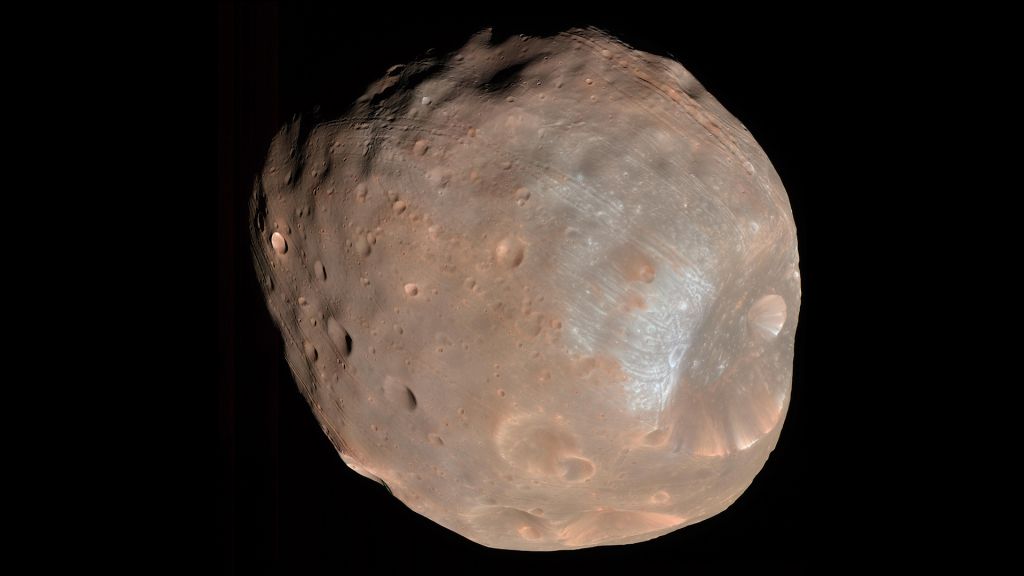
From Earth's rocky, pockmarked satellite to ice-covered ocean worlds, our solar system is chock-full of moons. Some planets have dozens of them; others don't have any. Astronomers find these satellites very interesting — geologically and, potentially, astrobiologically — and are eager to send probes to visit lunar destinations, such as Jupiter's moon Europa and Saturn's moon Enceladus.
So it might surprise you to discover that, currently, there is no scientific definition of a moon.
The scholars in charge of such an undertaking would be the International Astronomical Union (IAU), which approves and certifies the names of celestial objects, planetary scientist Francis Nimmo of the University of California, Santa Cruz, told Live Science. And he was unable to find a place where the group defines the term.
Related: How Many Humans Could the Moon Support?
It's possible the IAU is somewhat wary of providing a definition for a moon, given the fallout from the group's 2006 vote to define a planet, which demoted Pluto to mere dwarf-planet status. The controversial decision angered some scientists and members of the public, and it remains a sore spot to this day.
Pluto's demotion even created some cartographic headaches, Nimmo said. The system for defining Pluto's longitude was updated when the world's planetary status changed, because dwarf planets use a different coordinate system than planets. So all maps from before 2006 are essentially upside-down compared to those created after the recategorization, according to The Planetary Society.
This is one of the reasons why definitions matter, Nimmo said. "You need to have a common language so that you're not getting at cross-purposes when you're having conversations. If you don't have definitions of things, you can end up with horrible confusion."
Get the Space.com Newsletter
Breaking space news, the latest updates on rocket launches, skywatching events and more!
What's in a name?
Nevertheless, Nimmo said he doesn't think there is reason to officially define a moon yet. The informal definition that he, and probably the majority of people, have in their heads works just fine. "As far as I'm concerned, a moon is something that orbits a planet or dwarf planet."
The only distinction between different moons that most researchers make depends on whether they are regular or irregular satellites, Nimmo added. Regular satellites, like Jupiter's moons Io and Ganymede, generally orbit in the same plane around their parent planet, whereas irregular ones, like Jupiter's Pasiphae, tend to have weird and eccentric orbits.
This is usually considered to be a consequence of a satellite's origin story. Regular moons are thought to have formed from the same material and around the same time and place as their planet or to have been carved out of the planet by a massive collision, as is suspected of Earth's moon. Irregular satellites, on the other hand, are usually believed to be asteroids or comets that formed somewhere else and were later captured by a planet's gravitational pull.
Of course, Nimmo's unofficial moon definition might itself require updating one day. Some researchers have lately speculated about the possibility of moons that orbit other moons, objects that the internet has naturally dubbed moonmoons. These could challenge the definition Nimmo gave above. But moonmoons remain hypothetical, so perhaps the informal definition can stand.
"I think maybe everybody's clear about what a moon is," said Nimmo.
- The Greatest Mysteries of Jupiter's Moons
- Top 5 Mysteries of the Moon
- What If the Moon Disappeared Tomorrow?
Originally published on Live Science.

Join our Space Forums to keep talking space on the latest missions, night sky and more! And if you have a news tip, correction or comment, let us know at: community@space.com.

Adam Mann is a journalist specializing in astronomy and physics stories. His work has appeared in the New York Times, New Yorker, Wall Street Journal, Wired, Nature, Science, and many other places. He lives in Oakland, California, where he enjoys riding his bike. Follow him on Twitter @adamspacemann or visit his website at https://www.adamspacemann.com/.
-
rod Well, interesting question on defining a moon. This morning near 0600 EST, I was out viewing the waning crescent Moon in Leo using my 10x50 binoculars. Lovely view with earthshine easily visible and craters along the terminator line. Using my frame of reference view of the Moon - this observation fits *What Does it Take to Be a Moon?* :)Reply










